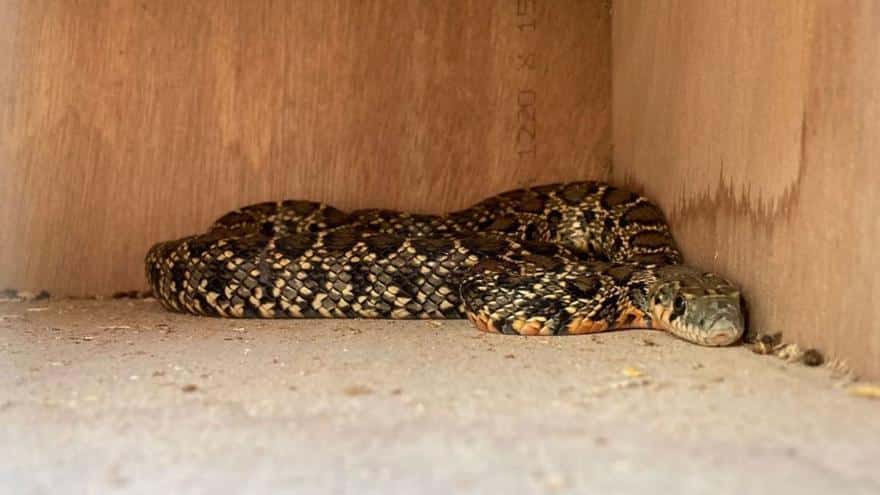The environmental foundation IbizaPreservation has succeeded in capturing a total of 499 specimens of the horseshoe snake (Hemorrhois hippocrepis) this year in areas of high biodiversity value, which means more than one snake captured per day. This has been achieved through the project ‘Protegim ses Sargantanes’ and thanks to the installation of 280 traps in various parts of the island. “This initiative not only increases the number of traps placed by the foundation in 2023 in protected natural areas, but has significantly expanded its scope by incorporating the collaboration of private farms,” they emphasize in a press release about it.
This intensive trapping campaign, whose objective is to ftion of “this invasive species that seriously threatens the pitiusa lizard” (Podarcis pityusensis), an endemic reptile of the Pitiusas in serious danger of extinction, was carried out between May and October”. The actions were carried out in two protected natural areas: ses Feixes de Talamanca and the Natural Park of ses Salines, in addition to the collaboration of about 50 private property owners who joined the initiative.
Two protected areas
“In ses Feixes de Talamanca, the number of traps was doubled compared to the previous year, installing 40 devices in 2024, compared to the 20 used in 2023. This increase made it possible to capture a total of 98 snakes, surpassing the 87 captures achieved the previous year,” add the authors of this program. In the Natural Park of Ses Salines, the number of traps installed was also double that of the previous year, 40, which resulted in the capture of 39 specimens, compared to six in 2023.
In total there were 48 private estates, spread throughout Ibiza, where “200 traps were placed strategically distributed to cover the most affected areas, which caught a total of 362 snakes”. Jordi Serapio, coordinator of ‘Protegim ses Sargantanes’, highlights the success in the collaboration with farmers on the island, since “it was expected a participation of about 20 farms, initially, and have come to be 48”. Also, the goal is to continue adding more traps and collaborators in the year 2025, to have more and more capacity for action in this regard.
Great challenge for Ibiza
IbizaPreservation recalls that the horseshoe snake is an invasive species introduced on the islands in the early 2000s and stresses that “represents a serious danger to the pitiusa lizard, a reptile that has inhabited Ibiza and Formentera for more than 4,000 years”. In addition, this environmental organization places “the fight against this invasive species” as “one of the most important challenges of biodiversity conservation that currently exists in Ibiza”.
In this sense, they warn that without defense mechanisms against snakes, sargantan populations have declined drastically. “Studies warn of a high risk of extinction if measures are not taken (…) Eto completely eradicate snake populations already naturalized on the island for so many years is impossible. Therefore, from IbizaPreservation, we are focusing on strengthening lizard populations in areas of high biodiversity value, supporting the work done by Cofib [Consorcio de Recuperación de la Fauna de las Illes Balears] and other agents on the island,” says Serapio, who points out that “this reptile plays a fundamental role in the ecosystems of the Pitiusas, as it acts as a controller of agricultural pests by feeding on insects, as well as being a pollinator and disperser of seeds of native plants”.
“The population of the Pitiusa lizard on the island of Ibiza is in a very worrying state of conservation,” reiterates the coordinator.
IbizaPreservation values that “the results of the project ‘Protegim ses Sargantanes’ contribute to mitigate the pressure of snakes on the local fauna, as it joins efforts with other ongoing eradication initiatives”. In the words of Inés Roig, project technician, “initiatives like this are essential to reduce the pressure exerted by snakes on our local fauna”. “The results obtained oblige us to continue in 2025 and to continue increasing the number of traps installed,” she concludes.
For the full article, please visit Diario de Ibiza website here.

